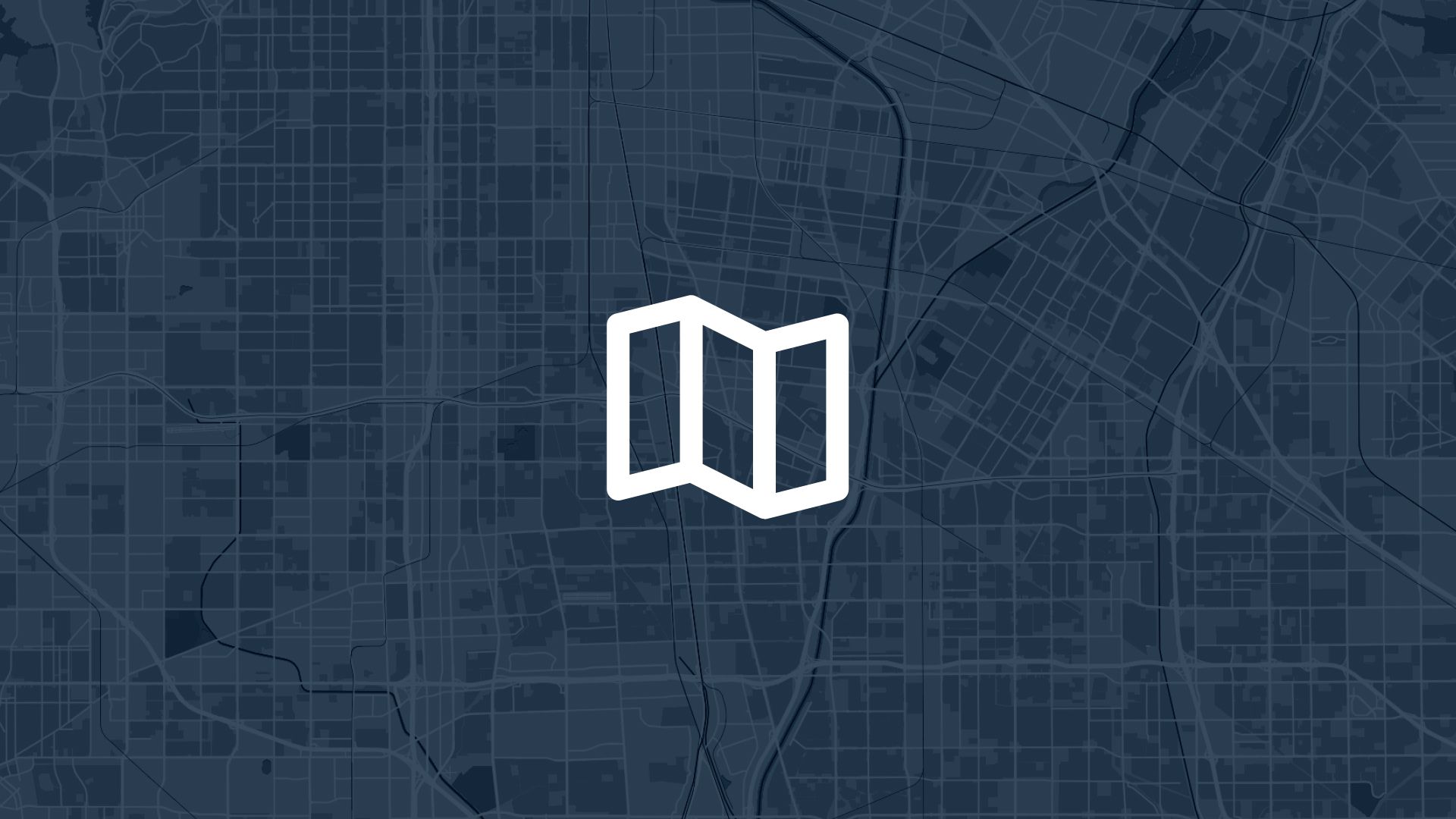The most effective retail redevelopment combines comprehensive brownfield site identification with remediation analysis to reveal exactly which contaminated properties offer optimal redevelopment potential, minimize environmental costs, and maximize retail transformation opportunities.
If your retail redevelopment relies only on general property listings, basic contamination data, or site information that lacks detailed brownfield analysis and remediation assessment, you're missing the redevelopment intelligence that determines project feasibility, environmental costs, and transformation potential. That's why experienced retail developers ask: can we find brownfield sites for retail redevelopment to identify properties with optimal remediation potential, evaluate environmental challenges, and select strategic locations for retail projects based on comprehensive brownfield analysis and transformation opportunities?
With Atlas, you can create comprehensive brownfield site analysis that combines contaminated property identification with remediation evaluation and retail intelligence for actionable redevelopment decisions. No complex environmental modeling software, no uncertainty about site conditions, no barriers to understanding brownfield opportunities. Everything starts with clear geographic visualization and meaningful environmental assessment.
Here's how to set it up step by step.
Why Finding Brownfield Sites for Retail Redevelopment Matters for Commercial Development
Creating comprehensive brownfield analysis and remediation evaluation enables better site selection and more effective retail redevelopment across contaminated properties.
So finding brownfield sites for retail redevelopment isn't just convenient property identification—it's essential redevelopment intelligence that transforms environmental challenges into strategic retail opportunities for successful commercial transformation.
Step 1: Set Up Comprehensive Brownfield Data and Environmental Intelligence Integration
Atlas makes it easy to create detailed brownfield analysis with comprehensive contamination and redevelopment evaluation:
- Upload brownfield inventory data including contaminated site locations, contamination types, environmental status, and remediation history organized for retail redevelopment analysis
- Add environmental assessment information showing contamination levels, soil conditions, groundwater impacts, and environmental factors that affect retail redevelopment feasibility
- Import regulatory compliance data connecting environmental permits, cleanup requirements, and regulatory status that affect brownfield redevelopment timeline and costs
- Include redevelopment context showing market conditions, zoning regulations, and incentive programs that affect brownfield retail development potential and project economics
Once configured, your brownfield analysis provides the geographic foundation for comprehensive contaminated site evaluation and retail redevelopment planning.
Step 2: Create Brownfield Site Identification and Retail Suitability Visualization
Next, build brownfield redevelopment visualization that reveals environmental conditions and retail development potential across contaminated properties:
You can display different brownfield analysis approaches:
- Contamination level mapping showing brownfield sites with color-coded contamination severity that reveals remediation complexity and retail redevelopment feasibility
- Remediation status analysis displaying cleanup progress, environmental permits, and regulatory compliance that affect brownfield retail development timeline
- Location advantage evaluation revealing how brownfield sites in prime retail locations offer market positioning, infrastructure access, and customer reach benefits
- Combined environmental-retail scoring integrating contamination assessment with retail market potential to identify brownfield sites with optimal redevelopment opportunities
- Incentive opportunity analysis showing available grants, tax credits, and redevelopment programs that improve brownfield retail project economics
- Infrastructure compatibility assessment mapping existing utilities, transportation access, and site infrastructure that support brownfield retail redevelopment
Each visualization approach reveals redevelopment characteristics that inform retail development decisions, environmental planning, and brownfield transformation strategies.
Step 3: Analyze Brownfield Potential and Retail Redevelopment Opportunities
To extract retail insights from brownfield analysis and environmental assessment:
- Identify viable brownfield sites discovering contaminated properties with manageable remediation requirements, favorable market locations, and characteristics that support retail redevelopment success
- Evaluate remediation economics understanding environmental cleanup costs, regulatory requirements, and timeline factors that affect brownfield retail development feasibility and investment return
- Assess retail market potential analyzing how brownfield site locations, infrastructure access, and market positioning enable optimal retail transformation and customer attraction
- Compare redevelopment scenarios evaluating trade-offs between remediation costs, market potential, and incentive opportunities to optimize brownfield site selection and project economics
- Discover transformation opportunities using brownfield analysis to identify contaminated properties where retail redevelopment offers the best combination of environmental improvement and commercial success
Brownfield analysis and retail assessment reveals redevelopment opportunities and site optimization strategies that maximize retail transformation success and environmental restoration.
Step 4. Enable Retail Redevelopment Team Coordination and Environmental Assessment
To support commercial redevelopment and brownfield planning:
- Create brownfield redevelopment dashboards providing development teams with comprehensive contamination analysis, remediation evaluation, and retail opportunity intelligence
- Set up project coordination tools helping retail teams understand environmental conditions, plan redevelopment strategies, and coordinate remediation activities based on brownfield analysis
- Add regulatory communication enabling clear presentation of environmental status, remediation plans, and compliance requirements to regulatory agencies and stakeholders
- Include environmental planning providing brownfield analysis for remediation design, environmental permits, and regulatory approval processes
- Configure portfolio management using brownfield data to support retail redevelopment portfolio development, environmental coordination, and strategic site selection across multiple contaminated properties
Brownfield redevelopment intelligence becomes actionable across development teams, enabling coordinated environmental planning and informed retail transformation decisions.
Step 5: Optimize Retail Redevelopment Strategy and Environmental Integration
To use brownfield analysis for strategic retail redevelopment:
- Plan retail transformation portfolios using brownfield analysis to identify multiple viable contaminated sites and coordinate regional retail redevelopment strategies
- Optimize remediation efficiency understanding contamination patterns and cleanup requirements to maximize environmental restoration while minimizing redevelopment costs
- Coordinate environmental compliance using brownfield analysis to plan regulatory approvals, environmental permits, and compliance strategies that support retail redevelopment success
- Design community engagement strategies analyzing brownfield transformation benefits to plan stakeholder communication, community involvement, and public support for retail redevelopment projects
- Plan sustainable development understanding environmental restoration opportunities to design retail projects that provide community benefits and environmental improvement
Also read: Draw 1km Retail Catchment Areas and Compare Parcels
Step 6: Integrate Brownfield Analysis with Retail Development Systems
Now that comprehensive brownfield analysis and remediation evaluation are complete:
- Export redevelopment intelligence for integration with retail development platforms, environmental management systems, and project coordination tools
- Create environmental support using brownfield analysis to inform remediation design, regulatory compliance, and environmental restoration planning for retail projects
- Set up regulatory coordination providing brownfield analysis for environmental permits, cleanup approvals, and regulatory compliance documentation
- Design portfolio management using brownfield analysis to support retail redevelopment portfolio development, environmental planning, and strategic site selection across multiple contaminated properties
- Generate investment intelligence supporting retail consulting, redevelopment analysis, and investment decisions with comprehensive brownfield assessment and transformation evaluation
Your brownfield retail analysis becomes part of comprehensive redevelopment that creates better project outcomes through environmental intelligence and strategic retail transformation.
Use Cases
Finding brownfield sites for retail redevelopment is useful for:
- Retail redevelopment specialists identifying viable contaminated properties and evaluating transformation potential based on comprehensive brownfield analysis and remediation assessment
- Environmental consultants evaluating brownfield cleanup opportunities and planning remediation strategies based on contamination analysis, regulatory requirements, and retail development potential
- Investment analysts assessing brownfield retail project potential and making investment decisions based on environmental risks, remediation costs, and redevelopment return opportunities
- Urban planners evaluating brownfield redevelopment patterns and planning community improvement based on contaminated site transformation and retail development benefits
- Retail developers supporting brownfield transformation with site selection and feasibility analysis based on environmental conditions, market potential, and redevelopment incentive opportunities
It's essential for any retail redevelopment where project success depends on understanding environmental conditions and making brownfield-informed decisions about contaminated site transformation and retail development.
Tips
- Consider remediation complexity analyzing not just contamination presence but also cleanup requirements, regulatory processes, and environmental factors that affect redevelopment timeline and costs
- Evaluate market positioning understanding how brownfield locations relate to retail markets, customer access, and competitive advantages that justify environmental remediation investment
- Include incentive programs analyzing available grants, tax credits, and redevelopment incentives that improve brownfield retail project economics and investment viability
- Plan for regulatory compliance understanding environmental permits, cleanup standards, and regulatory requirements that affect brownfield retail redevelopment approval and timeline
- Combine with community benefits analyzing how brownfield retail redevelopment provides community improvement, environmental restoration, and economic development advantages
Finding brownfield sites for retail redevelopment in Atlas enables comprehensive environmental assessment and evidence-based retail transformation decisions.
No separate environmental analysis software needed. Just analyze brownfield conditions and redevelopment potential geographically, evaluate remediation opportunities, and discover the retail intelligence that optimizes contaminated site transformation and commercial development.
Site Search and Evaluation with Atlas
Finding the right location isn't just about availability—it's about discovering sites that meet your specific requirements and offer the best potential for project success.
Atlas helps you turn location criteria into actionable site intelligence: one platform for site analysis, evaluation, and strategic selection.
Transform Location Requirements into Site Intelligence
You can:
- Analyze terrain conditions, environmental factors, and infrastructure access that affect site suitability
- Evaluate multiple sites simultaneously and compare them based on your specific project requirements
- Identify optimal locations by combining geographic analysis with project-specific criteria and constraints
Also read: Track Equipment and Assets by Location
Build Site Selection That Drives Project Success
Atlas lets you:
- Score and rank potential sites based on multiple criteria and project requirements
- Generate comprehensive site reports that support decision-making and stakeholder communication
- Export site intelligence for integration with project development and investment analysis systems
That means no more guessing about site suitability, and no more uncertainty about which locations offer the best potential for your projects.
Discover Better Sites Through Geographic Intelligence
Whether you're developing retail projects, planning commercial facilities, or selecting business locations, Atlas helps you turn site requirements into competitive advantage.
It's site evaluation—designed for geographic precision and project success.
Find Your Ideal Location with the Right Tools
Site selection is complex, but location intelligence can be simple. Whether you're evaluating environmental conditions, analyzing redevelopment potential, assessing remediation opportunities, or planning transformation projects—location matters.
Atlas gives you both precision and insight.
In this article, we covered how to find brownfield sites for retail redevelopment, but that's just one of many ways Atlas helps you evaluate sites.
From environmental analysis to redevelopment assessment, remediation evaluation, and transformation planning, Atlas makes site search and evaluation accessible and actionable. All from your browser. No environmental expertise needed.
So whether you're developing retail projects or selecting any type of redevelopment opportunity, Atlas helps you move from "searching for sites" to "selecting optimal locations" faster.
Sign up for free or book a walkthrough today.




